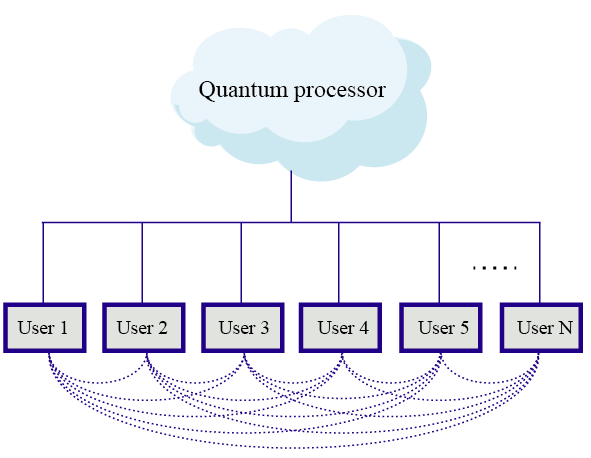
Time:2019-12-27 Read:2418
A quantum network is an important platform for applying quantum information and testing quantum theory. Recently,it has been shown that the perfect entanglement swapping can be realized if the Bell-state measurement uses the sum-frequency generation (SFG). Furthermore, SFG between single photons at telecom wavelengths has been experimentally demonstrated, and one heralded entangled-photon pair in the visible wavelength regime with fidelity greater than 90% may be obtained in theory. However, the generated entangled-photon pair of the visible wavelength regime based on the SFG process cannot be used for the optical fiber network, and at the same time, the number of users of communication is also limited to only two users.
Here we present an entanglement-swapping-based dense wavelength division multiplexing (DWDM) network in which a single-photon source distributes N quantum states in the telecommunications band to N distant users. All distant users are in a fully connected graph by performing the Bell-state measurements based on SFG, as shown in Fig.1.

Fig. 1. The concept of the entanglement-swapping-based DWDM quantum network.
In our experiment, we demonstrate the feasibility of our approach by using a single-photon source. The spectrum of the generated single-photon source is divided into four international telecommunication union (ITU) channels, where the frequency correlation of photons is built up via the DWDM, so two sets of time-energy entangled states are distributed to four users. Based on SFG between any two nonentangled photons, we can establish the entanglement between the other two independent photons. This makes four users a fully connected graph while allowing all pairs of users to generate the entanglement and the secure key using only a single-photon source.
The results show that the fidelity of the entangled state is larger than 90% and is independent of the number of users, which makes our proposal suitable for potentially building the large-scale quantum network. In addition, we notice that our network can achieve a 200-km entanglement distribution. Because of the scalability of our quantum network, it can be used for real quantum systems, such as point-to-point quantum direct communication.
The paper has been published in Physical Review letters with the title “Multiuser time-energy entanglement swapping based on dense wavelength division multiplexed and sum-frequency generation”.
Link: https://link.aps.org/doi/10.1103/PhysRevLett.123.250505